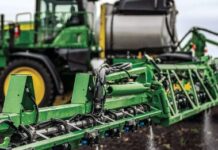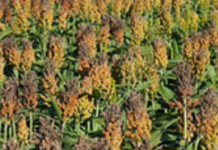Greg Doering
Kansas Farm Bureau
I can’t remember if I was helping check momma cows during calving season or chopping ice during a spell of cold weather when I was inspired to do something I shouldn’t. I do know it was about this time of year when my grandfather’s storytelling found a set of eager ears and launched a journey that would be completed a few weeks later, just about the time spring break rolled around.
I was in high school, and I can still envision the scene in my grandfather’s pickup truck as he told me about the time he tried to make wine when he was about my age. From my hazy recollection, the gist of the story was he poured some yeast into a bottle of grape juice and then stuffed a cork in the neck and stowed the brew away inside his closet.
Eventually, he forgot about the science experiment fermenting somewhere amongst his blue jeans and boots. The days turned into weeks before there was a sudden reckoning as the cork’s grip on the glass was overcome by a buildup of carbon dioxide and shot out, followed by the rest of the bottle’s contents.
“I got in a decent amount of trouble for ruining my clothes,” my grandfather told me. “But my closet sure smelled good for a long time.”
Even while I was laughing at the punchline, my mind was forming a plan to conduct my own experiment. I even had the benefit of knowing a cork shouldn’t be used. I also took satisfaction in the apparent loophole my grandfather helped me see. While I was too young to buy alcohol, there was no such prohibition on sourcing all of the necessary ingredients.
It didn’t take long to recruit a friend to help complete this small act of rebellion. We soon abandoned our initial plan to create our own vintage with freshly crushed grapes in favor of a couple bottles of juice off a shelf, a sack of sugar and some yeast. These supplies were artfully split between two different shopping carts so as to avoid raising any suspicions of their intended use.
We retreated to the cover of my friend’s kitchen to begin mixing the elixir, an act we were old enough to know was wrong, but we were young enough to do it anyway. We spooned in sugar and added bread yeast before stretching balloons over the lips of each bottle. Then we waited.
Periodically checking the concoction over the next few weeks provided a great view of chemistry in action. The yeast consumed the sugar producing enough carbon dioxide to fill the balloon, which was evidence our plan was working. When the rubber orbs started to deflate a few weeks later, it was finally time to test our winemaking skills.
We were naïve enough to hope we’d brewed something amazing. We would have settled for something that was merely drinkable. Our sights were set way too high. While the liquid gave off an almost pleasant aroma as we strained it through coffee filters, the initial sip was overpowering. So much so that I had a much more intimate understanding of what Roger Miller was singing about in “Chug-a-Lug.”
We didn’t make it much beyond the initial tasting before abandoning the idea of drinking our wine. I’m sure it could have been repurposed to strip varnish or a ground clearing herbicide, though. The only buzz I received from the wine was the bit of wisdom that my grandfather was lucky to have forgotten that bottle in his closet.




